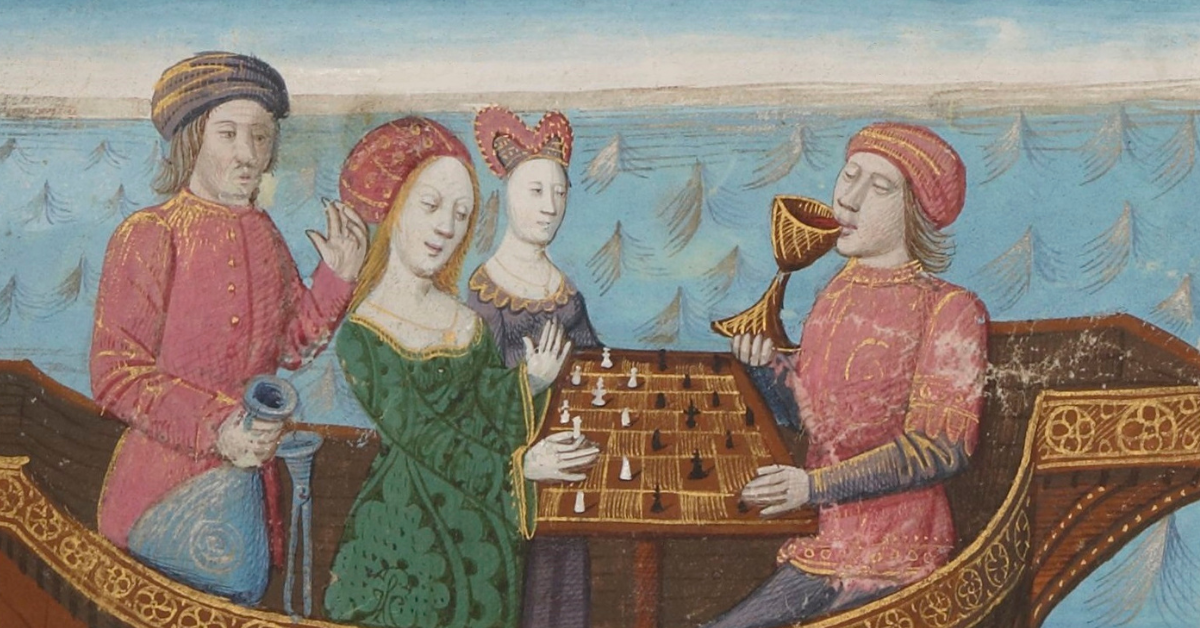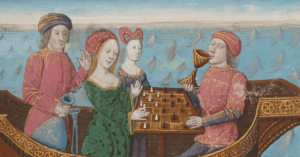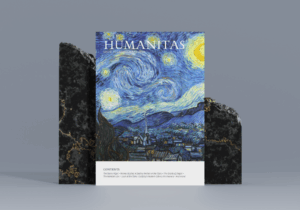

Featured image: Medieval miniature in French manuscript (ca. 1470, acc.to Hogenelst 1995) of Tristan and Iseult drinking the love potion, while playing chess on board a ship.
When you picture the Middle Ages, you might imagine knights in armour, illuminated manuscripts, and chanting monks. But in the quiet corners of monasteries and the courts of kings, another scene was playing out – one of pawns and bishops, kings and queens locked in silent battle. Chess, a game with origins far from Europe, had found a new and unexpected home in the medieval West.
From India to Iberia – and Into Europe
Chess began in India as chaturanga, a strategic board game played on an 8×8 grid. It made its way through Persia (becoming shatranj) and eventually crossed into Europe by way of Islamic Spain and Sicily sometime before the 10th century. From there, the game entered Latin Christendom, where it began to take on new forms and meanings.
One of the earliest surviving European references to chess is the Versus de scachis, a 10th-century Latin poem likely composed by a monk. The fact that this poetic praise of chess was preserved at a monastery in Switzerland hints at something surprising: this was a game not merely tolerated but enjoyed in religious and scholarly settings.
A Game Reflecting the Feudal World
Unlike its earlier versions, the chess that took root in Europe was reimagined to mirror feudal society. Gone were the elephants and viziers of earlier boards. In their place: knights, bishops, rooks (symbolising fortified castles), and – eventually – the queen.
Each piece came to represent a member of the medieval social hierarchy. The pawns were peasants; the knights, nobles and warriors; the bishops, Church authority; and the king, the head of the realm. Chess became a model of the ordered, structured world that the medieval mind sought to understand and maintain.
Monks, Morals, and Mental Discipline
The presence of chess in monasteries might seem at odds with a life of prayer and simplicity, and indeed, not everyone approved. By the 13th century, some Church authorities – like those at the Synod of Worcester in 1240 – banned monks and clergy from playing, claiming it was too worldly and distracting. Still, many others saw value in the game’s mental discipline and allegorical potential.
The most famous medieval commentary on chess came from Dominican friar Jacobus de Cessolis. In his treatise The Book of the Morals of Men and the Duties of Nobles, Jacobus used chess as a teaching tool, linking each piece to virtues and duties appropriate to one’s station in life. It was chess not merely as recreation, but as a map of the moral universe.
The Queen’s Rise to Power
Interestingly, the medieval version of chess featured a relatively weak queen – originally a male advisor figure who could only move one square diagonally. But in the late 15th century, just as queens like Isabella of Castile were rising in political prominence, the chess queen’s powers were dramatically expanded. She became the most mobile and powerful piece on the board, able to move any number of squares in any direction. The transformation was so significant that some historians call this era the birth of modern chess.
Chess as a Tool of Learning
Beyond its popularity in courts and cloisters, chess also became a metaphor for life itself – a contest of wit, foresight, and patience. It taught strategic thinking, cultivated moral reflection, and offered a structured form of play well suited to the intellectual life.
At Campion College, where students engage deeply with the history, literature, and philosophy of the Western tradition, chess finds a natural place. Not only as a pastime, but as an expression of the very values we study: logic, order, virtue, and the examined life.



